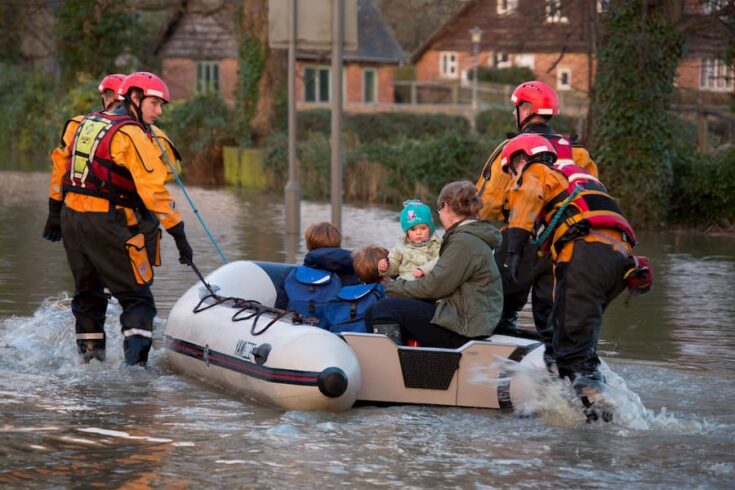Storms, floods, fires, droughts – every year, these and other natural hazards cost thousands of lives and cause destruction and disruption across the globe. The UK insurance industry shields clients at home and abroad from damaging financial and physical impacts, and contributes £40 billion and 300,000 jobs to the economy.
To do this effectively, stay competitive and reinforce their own resilience, insurance and reinsurance firms must secure the best possible understanding of the threats and risks such hazards pose. That means accessing and acting on the very best, most up-to-date science – a need made all the more urgent by a changing climate, and increasing demand for insurance payouts due to extreme weather.
About the projects
The Natural Environment Research Council (NERC) has delivered a range of cutting-edge science that helps insurers develop the right products and equip themselves to meet current and future challenges. Strong bonds with the industry play a key role in shaping the scope and direction of our work.
Climate change tipping points
NERC support has generated new ways of identifying approaching thresholds which, if exceeded, would lead to irreversible changes in the climate. This information is crucial for insurers to manage their risk portfolios effectively.
We have been working with NERC for decades to improve risk assessment of the impacts of natural catastrophes. The NERC science allows us to respond more effectively to client needs from corporate to sovereign level.
Willis Towers Watson
Storm cluster modelling
Scientists funded by NERC identified a link between the frequency and intensity of storms over Northern Europe, providing a platform for mathematical models that enable more accurate pricing of storm-related risks.
NERC science also plays a leading role in climate science internationally, including through inputs to the UK Climate Change Risk Assessments and International Panel on Climate Change reports. This benefits the insurance sector indirectly by:
- enabling more accurate weather forecasts, which allow insurance clients and society more widely to better prepare for hazards
- providing increasingly accurate climate projections to inform business decisions and development of the regulatory framework.
Impacts of the projects
Industry-leading tools and models boost the sector’s growth and protect communities
The LISFLOOD-FP computer model is providing a significant change in flood simulation capabilities. It is a blueprint for competitive pricing of flood reinsurance by improving the accuracy of prediction models.
Over one million Zambian farmers have insured themselves against drought thanks to TAMSAT, which has helped UK insurance firms expand into the African market and develop products tailored to its needs. Providing daily rainfall estimates for the entire continent, TAMSAT aids assessment of drought risk and assists insurers’ decision-making.
Partnerships and networks deliver access to world-class skills
A partnership involving NERC’s National Centre for Atmospheric Science (NCAS) and the Willis Research Network played a key role in helping reinsurance brokers estimate potential losses due to extreme weather events, by developing a state-of-the-art tropical cyclone decision-making tool. The collaboration also encouraged Willis Research Network to translate academic research into practical insurance applications estimated to be worth £800,000 a year.
The NERC-funded PURE programme established new productive collaborations between scientists and industry practitioners to improve the handling of uncertainties related to natural hazards and wider risks.

Cyclone Fani heading towards India in 2019: elements of this image furnished by NASA
Advanced warnings enable better preparedness and avoid insured losses
Improved global climate models that aid risk assessment have cut insured losses due to storm damage by £62 million to £130 million per year. A new model, developed by the NERC-funded UK Centre for Ecology and Hydrology (UKCEH), extends advance warnings of severe weather from two to five days and could cut the cost of flood damage by £76 million to £127 million per year.
NERC science protects homes by informing the closure of the Thames Barrier. For example, during the 2013 to 2014 winter floods, the Thames Barrier was closed 28 times, safeguarding the London flood plain and protecting properties from flooding, saving £2 billion in insurance payouts.
Investing for the future
With a clear focus on tomorrow’s as well as today’s threats, NERC science strengthens links between environmental science and the insurance sector. Current initiatives include:
- UK Climate Resilience – a £19 million collaboration led by NERC and the Met Office aiming to deliver robust interdisciplinary climate risk and adaptation solutions research, as part of the UKRI Strategic Priorities Fund
- a collaboration with Innovate UK to develop a programme for the financial services sector to deliver improved data and analytics on climate and other environmental change-related hazards, vulnerabilities and risks
- funding for PhD students and knowledge exchange fellows working closely with the insurance sector.
The NERC-funded PhD students produced outputs of genuine business value, solving commercial problems with a scientific angle.
Lloyd’s of London
Top image: A family in an inflatable boat being rescued from a flood. Credit: Getty Images.

